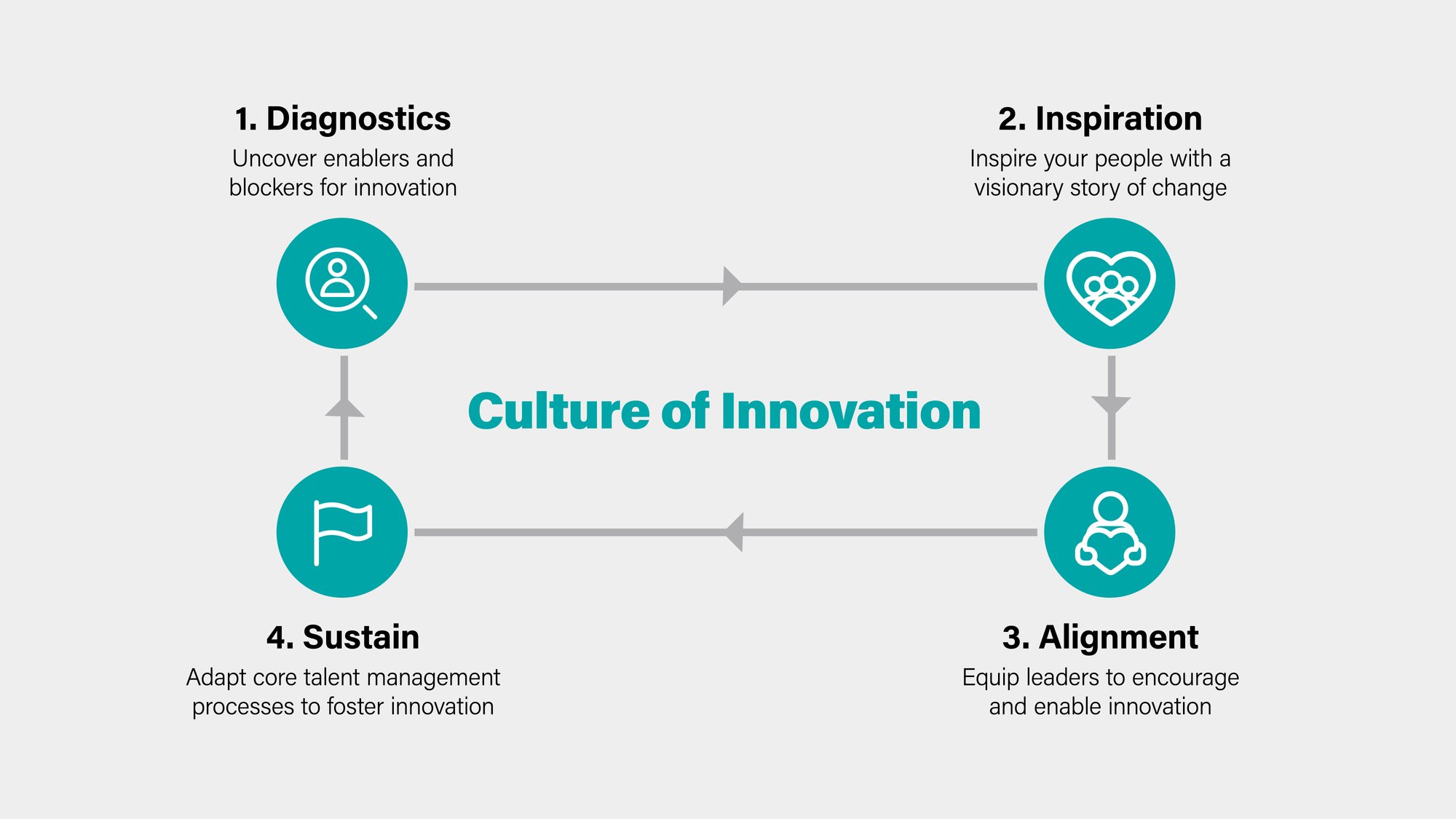Disruption-Ready: Cultivating a Culture of Innovation
By Hafsa Aziz and Sarah Taylor-Forbes
Pride in overcoming challenges. Ideas that are heard and valued. Dynamic teams collaborating to solve problems, together. These are the hallmarks of an innovative culture - a space where creativity thrives.
If these practices are so attractive and celebrated, why is it so difficult to embed them into your organisational DNA?
It starts with a misunderstanding
When people hear the word ‘innovation’, they think of endless brainstorming sessions, quirky ideas and fearless risk taking. In reality, an innovative culture is achieved by balancing energising freedom and rigorous discipline.
Many organisations romanticise the idea of ‘celebrating failure’. But it’s not the failure itself that deserves applause; it’s the learning that comes from it.
Truly innovative cultures demand more than fun and freedom. They require tough, sometimes uncomfortable, balancing acts. That means a tolerance for failure coexisting with high standards of competence. Experimentation tempered with discipline. Psychological safety reinforced with honest feedback. Collaboration alongside personal accountability. Flat hierarchies with decisive leadership.
Unless you can navigate these tensions, your attempts to nurture innovation are likely to fail.
What does an innovative culture look like?
-
It celebrates growth, not mediocrity
Learning from failure is valued. But there’s a clear distinction between making mistakes and displaying incompetence. Experimentation without accountability only leads to chaos. -
It encourages experimentation, within a framework
Creativity flourishes within thoughtful boundaries. This disciplined approach ensures experimentation is purposeful and cost-effective, providing bold ideas that can be followed through and translated into tangible, actionable outcomes. -
It provides the safety to speak and the courage to challenge
For innovation to thrive, people must feel safe to voice their thoughts without fear of retaliation. However, psychological safety is a two-way street; it doesn’t mean avoiding tough conversations and holding back honest feedback. -
It’s where collaboration meets ownership
Two minds are always better than one. But individual accountability is essential for responsible innovation. The best organisations enable collective brainstorming alongside clear ownership of decisions. -
It combines flat structures with strong leadership
Flat organisations empower employees to take initiative and innovate. But they demand strong, visionary leadership to maintain focus, prevent chaos and empower teams to act with confidence.
4 steps to building an innovative culture
-
A cultural audit
Start by taking stock of your current culture and identify what enables and blocks innovation day to day. A detailed diagnostic will shed light on any gaps and provide a roadmap for building a culture that drives innovation at all levels of your organisation. -
A compelling change narrative
Change is most effective when it has a clear purpose that connects with people. By crafting a narrative that helps people see your vision and how it links to their day-to-day work, you’ll inspire them to be part of the journey. -
Leaders that enable disruption
Leadership today isn’t just about hierarchy; it’s about influence. Equip leaders and managers at all levels with an understanding of how they can enable innovation in their respective teams. -
Innovation in processes
Embedding innovation isn’t a top-down initiative. To make it stick, align it with core talent management processes. Recognise and reward behaviours that drive innovation and differentiate high performers who embody these values.

Striking the balance
Innovation is not a playground for whimsical ideas. It’s a finely tuned system of experimentation, collaboration and accountability. To cultivate an innovative culture, leaders must tread a fine line - fostering creativity while maintaining structure, encouraging autonomy while providing guidance. It’s about creating a space where freedom and focus coexist, where mistakes lead to insights, and where ambition meets responsibility.
The journey to innovation may begin with leadership, but it needs commitment at every level. It’s a collective effort that must be intentionally designed and consistently nurtured.
While there’s no one-size-fits-all blueprint, the rewards are massive - a team that doesn’t just adapt to disruption but thrives on it, turning challenges into opportunities and ideas into breakthroughs.
